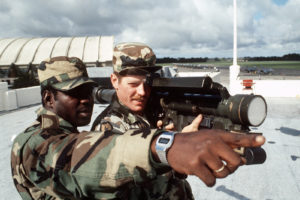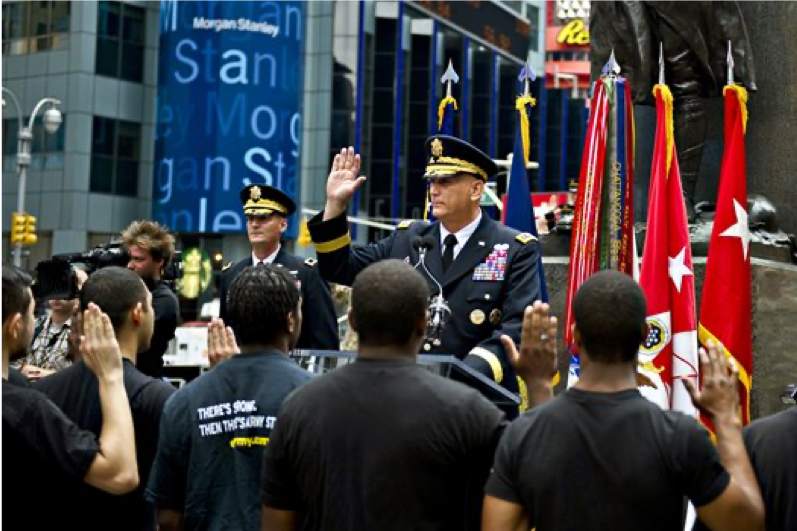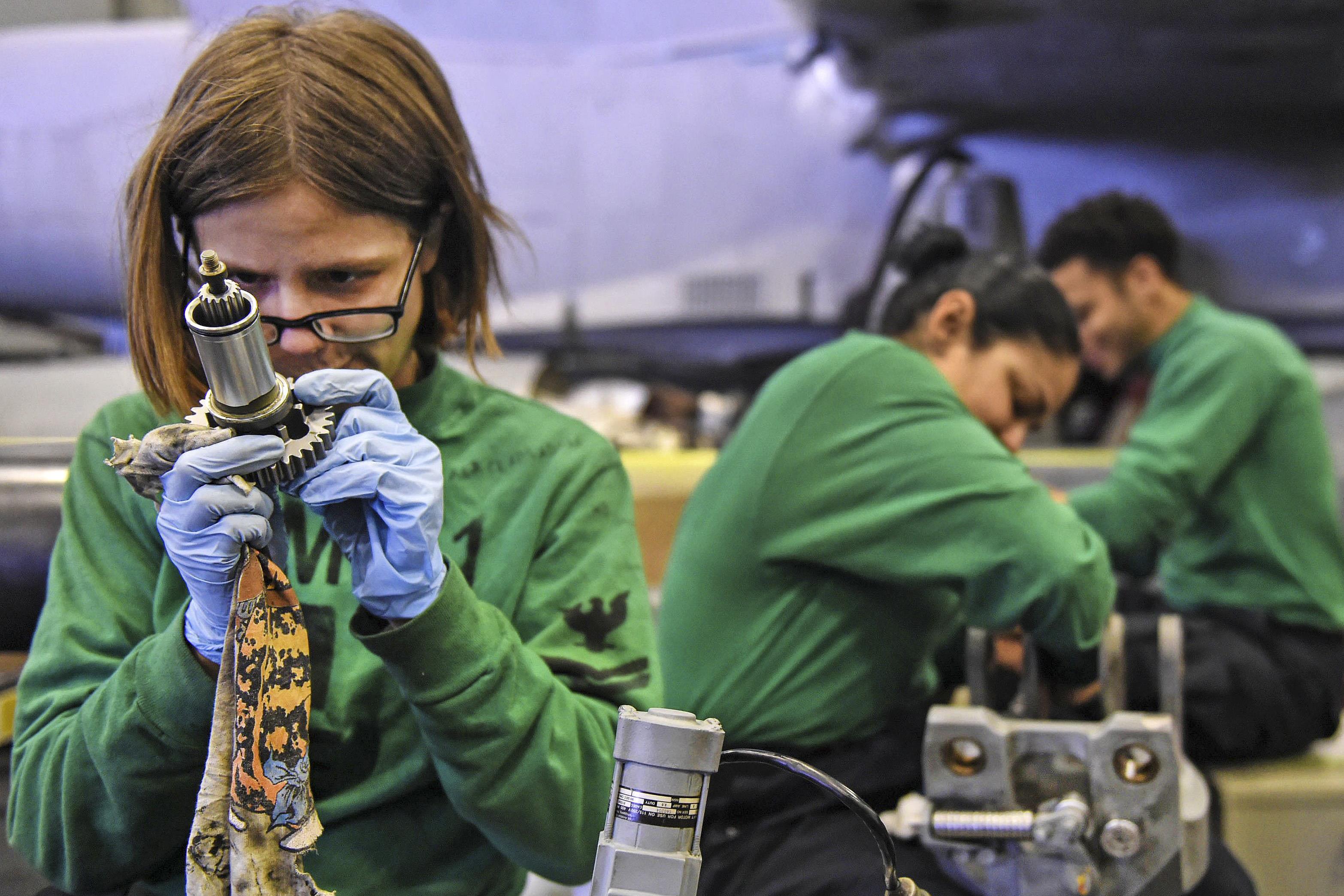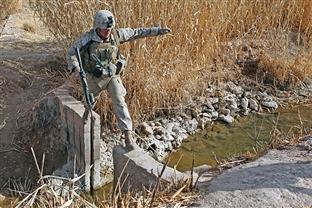
Members of the 25th Infantry Division aim a surface-to-air missile launcher. 24 September 1984. Author: MSGT David N. Craft
When we talk about “forgotten veterans,” we often think of those who served in the Korean War. Many veterans of that conflict feel as though they got lost between the WWII Generation and the Vietnam Veterans. I once had the honor of working with Sergeant Major (Retired) Raymond Moran, a veteran of the Korean War, as well as a combat tour in Vietnam and service at Dover Air Force Base after returning to Active Duty during the Gulf War. Amazing man, amazing stories.
We might also talk about those Gulf War veterans, many of whom were my leaders when I first joined the Army in 1992. Similar to the Korean War, these veterans sometimes feel as though they got lost between the Vietnam Veterans and Post 9/11 veterans. Their war, while short, was brutal as any combat ever was.
No, when I talk about forgotten veterans, I’m referring to the rest of them.
What about the navy veteran who served on a submarine for a few years in the mid-90s? Is he any less of a veteran than the Electronic Warfare Officer who provided counter-IED support to convoys in Baghdad? Or how about the Marine who enlisted for six years in the late eighties? Is he any less of a Devil Dog than the boys who hit the ground running in Helmand Province and Fallujah?
The forgotten veterans I’m talking about here are non-combat veterans, often called “Cold War Vets” for their service in Korea and Europe preparing for the potential of WWIII. My first duty station in Mannheim, Germany was populated with these men and women, who could recall stories of the Berlin Wall and the Fulda Gap. Maybe the most action they saw was at a bar called Charlie’s, but that didn’t change the fact that they served. For many of these veterans, their service was honorable, and it was through no fault of their own that there were no wars to deploy to.
Wait a minute, I hear you say, it’s not that we don’t respect those vets…but combat is dangerous, right? It’s not our fault that they didn’t get a war. I hear you, and if you’re like me, you wouldn’t wish war on anyone. I was talking to a veteran recently who quoted Thomas Paine: “If there be trouble, let it be in my day, that my children may have peace.” So they didn’t have trouble, because their fathers fought in Vietnam.
What if I were to tell you that a veteran was more likely to die in 1980 than in 2010? According to a 2015 Congressional Research Service Report, the total number of U.S. Active Duty Military deaths in 1980 was 2,392, as opposed to 1,485 in 2010. This was when there was NO conflict in 1980, and two in 2010. The advances in medical treatment and changes in combat casualty care certainly made a difference between these two numbers. One glaring discrepancy, though: in 1980, there were 231 self-inflicted deaths. In 2010, there were 289. The year before that, 302. Insufferable tragedy.
There were veterans who endured exposure to significant trauma without being in active combat. I’ve met Air Force veterans who were on the scene within days of the Khobar Tower bombings, and had to help recover the remains of their brothers. I’ve met Coast Guardsmen whose job it was to recover the remains of citizens who jumped to their death from bridges. Have you ever talked to a veteran who responded to New Orleans in the aftermath of Hurricane Katrina? Just that level of devastation alone, occurring on our own soil, sticks with you.
There is another type of forgotten veteran, though. This type of veteran stretches across all services, and all conflicts. They’re the veterans with bad paper.
There are times when an individual enlists in the military, but are unable or unwilling to conform to the rules and norms of the service, and are discharged before their scheduled end of term of service. In the Army, it is called “getting chaptered,” referring to specific chapters of a regulation that covers enlisted administrative separations. The Solider typically (in my day) has to have several serious violations before being administratively discharged. There had been times when I, as a leader, had Soldiers who were discharged for various reasons: drunk on duty, gang activity, recurring urinalysis failures. The causes for inappropriate behavior in 1995, however, were very different than the causes for inappropriate behavior in 2005.
Combat does have an impact on individuals, there is no doubt about that. What veterans see and do when they go off to war has a significant impact on their mental health, even more so if the combat was intense and the veteran was young. When a veteran serves two tours of duty in the Arghandab Valley and then returns home and gets a DUI, there is a reason for it, and it’s not because the veteran is a dirtbag. It’s sometimes because they haven’t learned or used tools to cope with transition back from combat. Typically, however, this veteran is chaptered out; if they’re lucky, they’re receive a General Under Honorable Conditions characterization of discharge, which means that they will be eligible for some of their benefits. If that characterization is under Other Than Honorable Conditions, however, or even worse, characterized as a Bad Conduct Discharge, they are cut loose entirely. No benefits with the Department of Veterans Affairs, no GI Bill, nothing. Even if they served 15 years honorably and stepped on their feet in a big way at the end, they get nothing. Zero.
Rajeev Ramchand, the Senior Behavioral and Social Scientist at The Rand Corporation, indicates in this report that the veterans with bad paper are those at the greatest risk of suicide; “paradoxically, this is the same group that has the fewest services available to them. Not only are these veterans denied services from the Department of Veterans Affairs, but Rand research has shown that many nonprofits serving veterans and their families will apply the same eligibility criteria in determining who they serve.”
A third forgotten veteran? The Reservist or National Guardsman. The challenges that they face, both during and after their service, are enough for an entire post of their own. They are a critical component to the success of the military, and yet often fail to receive the same support as those in the active service.
There is danger in splitting categories of those who could be considered “veterans” between those who have seen combat and those who have not, between those who received an honorable discharge and those who have not, those who were active duty and those who were not. Where does the division end? Do we become a poorly linked group of small “special” entities, instead of recognizing that the things that unite us are more common than the things that divide us? The cracks that a veteran can fall through are numerous and wide. Caring for veterans, regardless of era of service or type of discharge, is my passion. I hope it’s also yours.



1 Comment
Forgotten Veterans, The Citizen Soldiers | Head Space and Timing · August 2, 2016 at 4:42 am
[…] Bishop and Duane France regarding a type of “forgotten veteran” identified in one of Duane’s previous posts, the Reservist and National Guardsman. We hope you enjoy […]
Comments are closed.